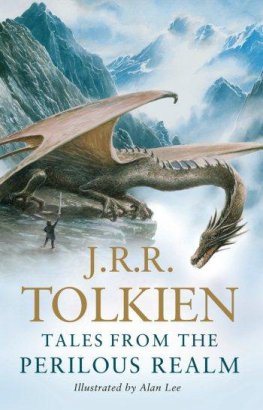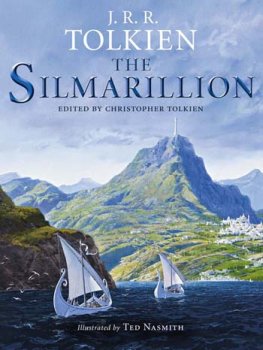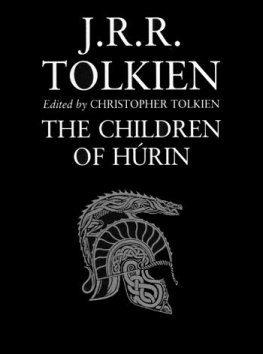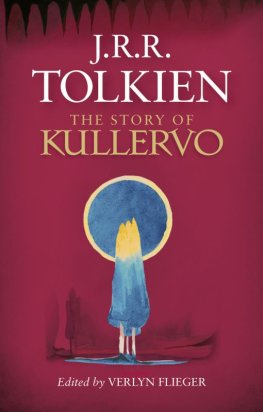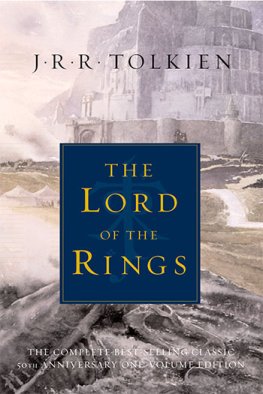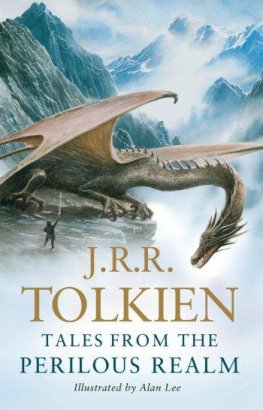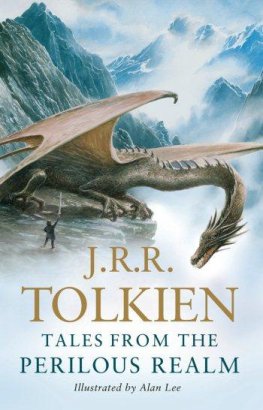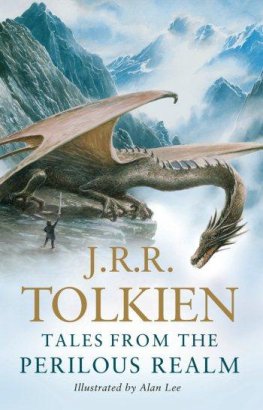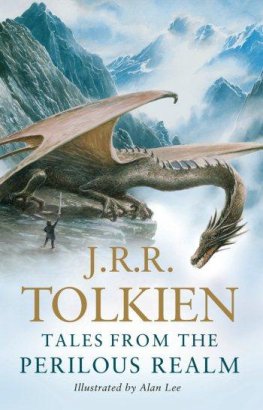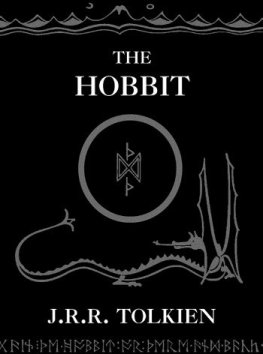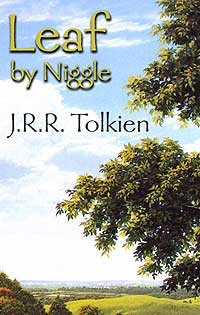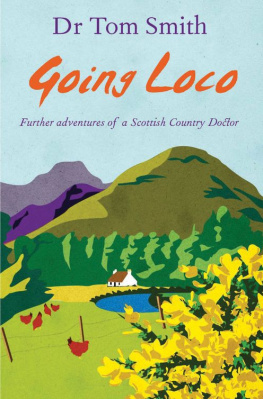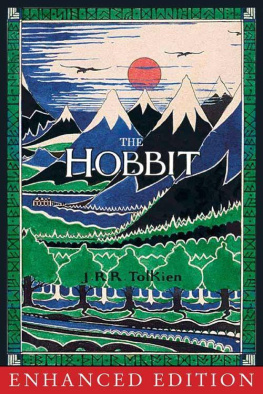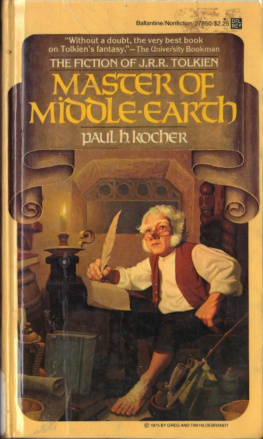THE ADVENTURES OF TOM BOMBADIL
The Red Book contains a large number of verses. A few are included in the narrative of the Downfall of the Lord of the Rings, or in the attached stories and chronicles; many more are found on loose leaves, while some are written carelessly in margins and blank spaces. Of the last sort most are nonsense, now often unintelligible even when legible, or half-remembered fragments. From these marginalia are drawn Nos. 4, II, 13; though a better example of their general character would be the scribble, on the page recording Bilbo's When winter first begins to bite:
The wind so whirled a weathercock
He could not hold his tail up;
The frost so nipped a throstlecock
He could not snap a snail up.
'My case is hard' the throstle cried,
And 'All is vane' the cock replied;
And so they set their wail up.
The present selection is taken from the older pieces, mainly concerned with legends and jests of the Shire at the end of the Third Age, that appear to have been made by Hobbits, especially by Bilbo and his friends, or their immediate descendants. Their authorship is, however, seldom indicated. Those outside the narratives are in various hands, and were probably written down from oral tradition.
In the Red Book it is said that No. 5 was made by Bilbo, and No. 7 by Sam Gamgee. No. 8 is marked SG, and the ascription may be accepted. No. 12 is also marked SG, though at most Sam can only have touched up an older piece of the comic bestiary lore of which Hobbits appear to have been fond. In The Lord of the Rings Sam stated that No. 10 was traditional in the Shire.
No. 3 is an example of another kind which seems to have amused Hobbits: a rhyme or story which returns to its own beginning, and so may be recited until the hearers revolt. Several specimens are found in the Red Book, but the others are simple and crude. No. 3 is much the longest and most elaborate. It was evidently made by Bilbo. This is indicated by its obvious relationship to the long poem recited by Bilbo, as his own composition, in the house of Elrond. In origin a 'nonsense rhyme', it is in the Rivendell version found transformed and applied, somewhat incongruously, to the High-elvish and Nmenorean legends of Erendil. Probably because Bilbo invented its metrical devices and was proud of them. They do not appear in other pieces in the Red Book. The older form, here given, must belong to the early days after Bilbo's return from his journey. Though the influence of Elvish traditions is seen, they are not seriously treated, and the names used (Derrilyn, Thellamie, Belmarie, Aerie) are mere inventions in the Elvish style, and are not in fact Elvish at all.
The influence of the events at the end of the Third Age, and the widening of the horizons of the Shire by contact with Rivendell and Gondor, is to be seen in other pieces. No. 6, though here placed next to Bilbo's Man-in-the-Moon rhyme, and the last item. No. 16, must be derived ultimately from Gondor. They are evidently based on the traditions of Men, living in shorelands and familiar with rivers running into the Sea. No. 6 actually mentions Belfalas (the windy bay of Bel), and the Sea-ward Tower, Tirith Aear, or Dol Amroth. No. 16 mentions the Seven Rivers In the Langstrand and Dol Amroth there were many traditions of the ancient Elvish dwellings, and of the haven at the mouth of the Morthond from which 'westward ships' had sailed as far back as the fall of Eregion in the Second Age. These two pieces, therefore, are only re-handlings of Southern matter, though this may have reached Bilbo by way of Rivendell. No. 14 also depends on the lore of Rivendell, Elvish and Nmenorean, concerning the heroic days at the end of the First Age; it seems to contain echoes of the Nmenorean tale of Turin and Mim the Dwarf.
Nos. 1 and 2 evidently come from the Buckland. They show more knowledge of that country, and of the Dingle, the wooded valley of the Withywindle, though, no doubt they had as little understanding of his powers as the Shirefolk had of Gandalf's: both were regarded as benevolent persons, mysterious maybe and unpredictable but nonetheless comic. No. I is the earlier piece, and is made up of various hobbit-versions of legends concerning Bombadil. No. 2 uses similar traditions, though Tom's raillery is here turned in jest upon his friends, who treat it with amusement (tinged with fear); but it was probably composed much later and after the visit of Frodo and his companions to the house of Bombadil.
The verses, of hobbit origin, here presented have generally two features in common. They are fond of strange words, and of rhyming and metrical tricks in their simplicity Hobbits evidently regarded such things as virtues or graces, though they were no doubt mere imitations of Elvish practices. They are also at least on the surface, lighthearted or frivolous, though sometimes one may uneasily suspect that more is meant than meets the ear. No. 15, certainly of hobbit origin, is an exception. It is the latest piece and belongs to the Fourth Age; but it is included here, because a hand has scrawled at its head Frodos Dreme. That is remarkable, and though the piece is most unlikely to have been written by Frodo himself, the title shows that it was associated with the dark and despairing dreams which visited him in March and October during his last three years. But there were certainly other traditions concerning Hobbits that were taken by the 'wandering-madness', and if they ever returned, were afterwards queer and uncommunicable. The thought of the Sea was ever-present in the background of hobbit imagination; but fear of it and distrust of all Elvish lore, was the prevailing mood in the Shire at the end of the Third Age, and that mood was certainly not entirely dispelled by the events and changes with which that Age ended.
1
THE ADVENTURES OF TOM BOMBADIL
Old Tom Bombadil was a merry fellow;
bright blue his jacket was and his boots were yellow,
green were his girdle and his breeches all of leather;
he wore in his tall hat a swan-wing feather.
He lived up under Hill, where the Withywindle
ran from a grassy well down into the dingle.
Old Tom in summertime walked about the meadows
gathering the buttercups, running after shadows,
tickling the bumblebees that buzzed among the flowers,
sitting by the waterside for hours upon hours.
There his beard dangled long down into the water:
up came Goldberry, the River-woman's daughter;
pulled Tom's hanging hair. In he went a-wallowing
under the water-lilies, bubbling and a-swallowing.
'Hey, Tom Bombadil! Whither are you going?'
said fair Goldberry. 'Bubbles you are blowing,
frightening the finny fish and the brown water-rat,
startling the dabchicks, and drowning your feather-hat!'
'You bring it back again, there's a pretty maiden!'
said Tom Bombadil. 'I do not care for wading.
Go down! Sleep again where the pools are shady
far below willow-roots, little water-lady!'
Back to her mother's house in the deepest hollow
swam young Goldberry. But Tom, he would not follow;
on knotted willow-roots he sat in sunny weather,
drying his yellow boots and his draggled feather.
Up woke Willow-man, began upon his singing,
sang Tom fast asleep under branches swinging;
in a crack caught him tight: snick! it closed together,
trapped Tom Bombadil, coat and hat and feather.
'Ha, Tom Bombadil! What be you a-thinking,
peeping inside my tree, watching me a-drinking
deep in my wooden house, tickling me with feather,
dripping wet down my face like a rainy weather?'

